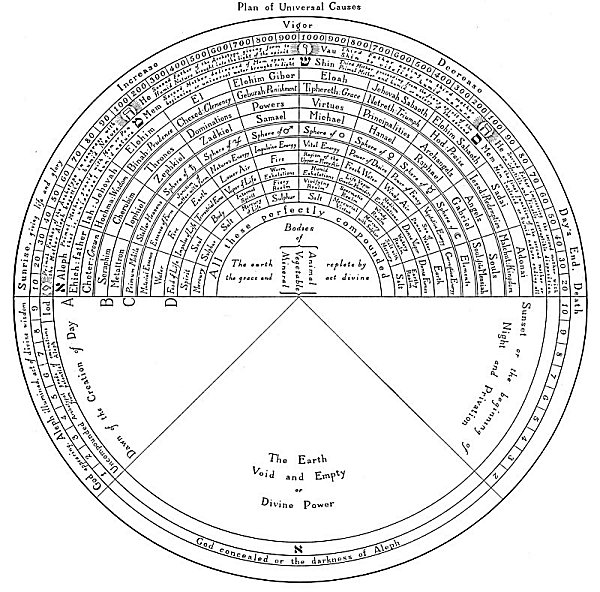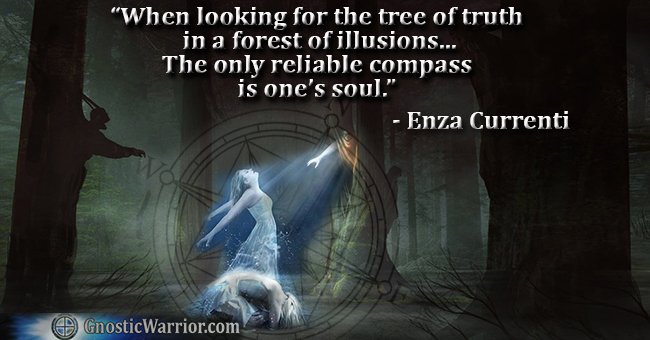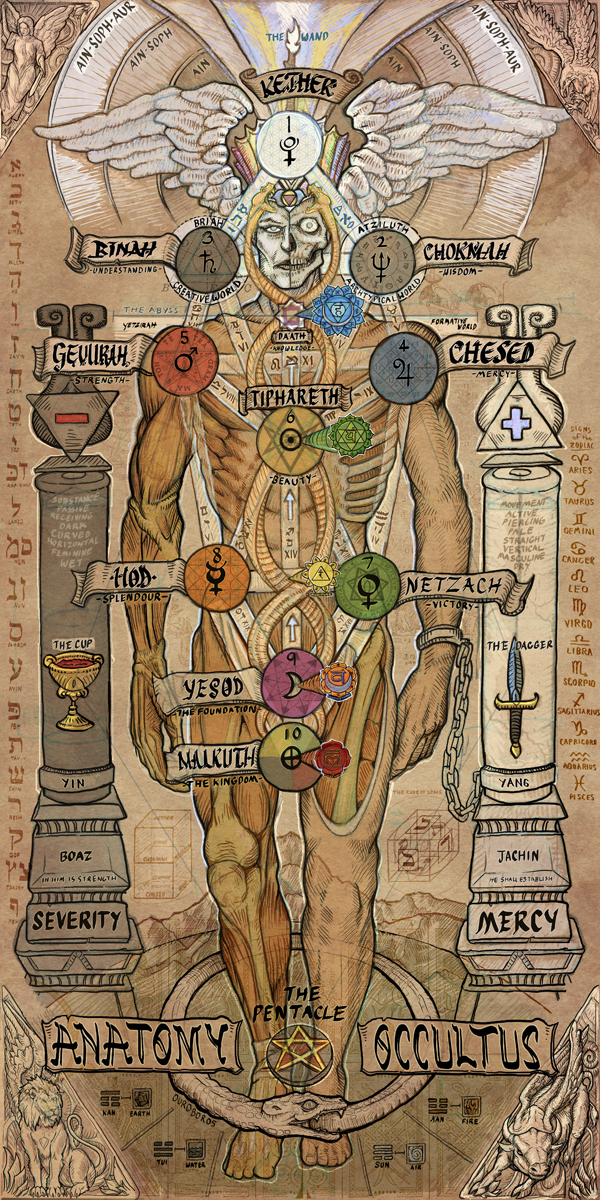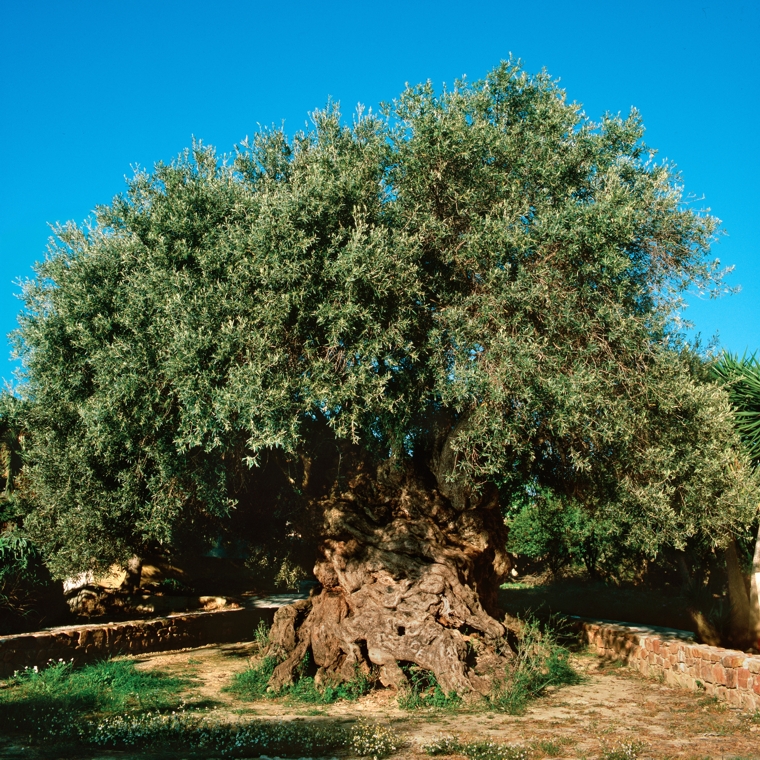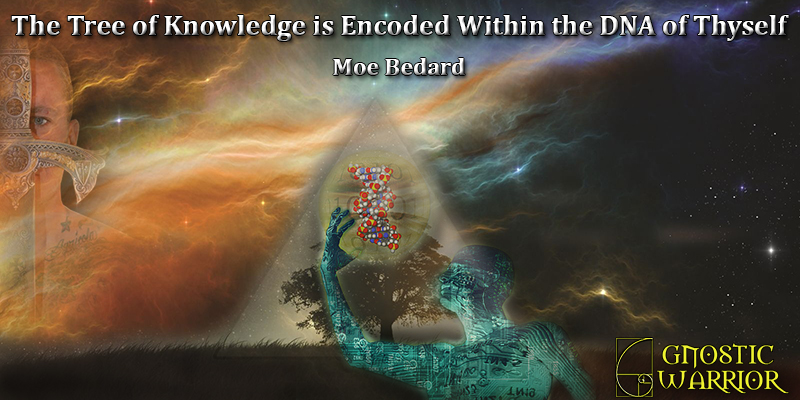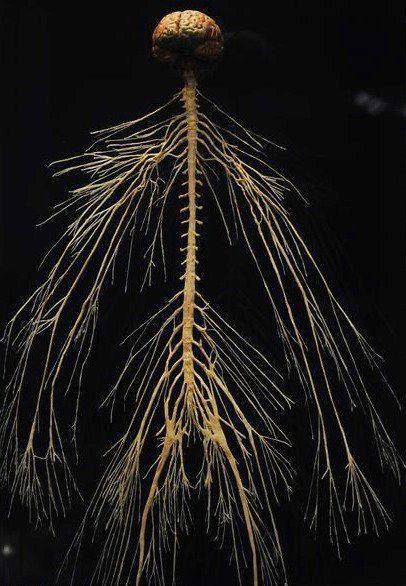Among the later Qabbalists there is also a division of the Sephirothic Tree into five parts, in which the distribution of the globes is according to the following order:
(1) Macroprosophus, or the Great Face, is the term applied to Kether as the first and most exalted of the Sephiroth and includes the nine potencies or Sephiroth issuing from Kether.
(2) Abba, the Great Father, is the term generally applied to Chochmah–Universal Wisdom–the first emanation of Kether, but, according to Ibn Gebirol, Chochmah represents the Son, the Logos or the Word born from the union of Kether and Binah.
(3) Aima, the Great Mother, is the name by which Binah, or the third Sephira, is generally known. This is the Holy Ghost, from whose body the generations issue forth. Being the third person of the Creative Triad, it corresponds to Jehovah, the Demiurgus.
(4) Microprosophus, or the Lesser Face, is composed of the six Sephiroth–Chesed, Geburah, Tiphereth, Netsah, Hod, and Jesod. The Microprosophus is commonly called the Lesser Adam, or Zauir Anpin, whereas the Macroprosophus, or Superior Adam, is Arikh Anpin. The Lesser Face is properly symbolized by the six-pointed star or interlaced triangles of Zion and also by the six faces of the cube. It represents the directions north, east, south, west, up, and down, and also the first six days of Creation. In his list of the parts of the Microprosophus, MacGregor-Mathers includes Binah as the first and superior part of the Lesser Adam, thus making his constitution septenary. If Microprosophus be considered as sexpartite, then his globes (Sephiroth) are analogous to the six days of Creation, and the tenth globe, Malchuth, to the Sabbath of rest.
(5) The Bride of Microprosophusis Malchuth–the epitome of the Sephiroth, its quaternary constitution being composed of blendings of the four elements. This is the divine Eve that is taken out
A TABLE OF SEPHIROTHIC CORRESPONDENCES.
From Fludd’s Collectio Operum. The above diagram has been specially translated from the Latin as being of unique value to students of Qabbalism and also as an example of Robert Fludd’s unusual ability in assembling tables of correspondences. Robert Fludd ranks among the most eminent Rosicrucians and Freemasons; in fact, he has often been called “the first English Rosicrucian.” He has written several valuable documents directly bearing upon the Rosicrucian enigma. It is significant that the most important of his works should be published at the same time as those of Bacon, Shakespeare, and the first Rosicrucian authors.
p. 123
THE SEPHIROTHIC TREE OF THE LATER QABBALISTS.
Translated from Kircher’s Œdipus Ægyptiacus. Having demonstrated that the Qabbalists divided the universe into four worlds, each consisting of ten spheres, it is necessary to consider next how the ten spheres of each world were arranged into what is called the ”Sephirothic Tree.” This Tree is composed of ten circles, representing the numbers 1 to 20 and connected together by twenty-two canals–the twenty-two letters of the Hebrew alphabet. The ten numbers plus the twenty-two letters result in the occult number 32, which, according to the Mishna, signifies the Thirty-two Paths of Wisdom. Letters and numbers, according to the Qabbalists, are the keys to all knowledge, for by a secret system of arranging them the mysteries of creation are revealed. For this reason they are called “the Paths of Wisdom.” This occult fact is carefully concealed in the 32nd degree of Freemasonry.
There are four trees, one in each of the four worlds established in the preceding chapter. The first is in the Atziluthic World, the ten circles being the ten globes of light established in the midst of AIN SOPH. The powers and attributes of this Tree are reflected into each of the three lower worlds, the form of the Tree remaining the same but its power diminishing as it descends. To further complicate their doctrine, the Qabbalists created another tree, which was a composite of all four of the world trees but consisted of only ten globes. In this single tree were condensed all the arcana previously scattered through the voluminous archives of Qabbalistic literature.

Moe is the founder of GnosticWarrior.com. He is a father, husband, author, martial arts black belt, and an expert in Gnosticism, the occult, and esotericism.

